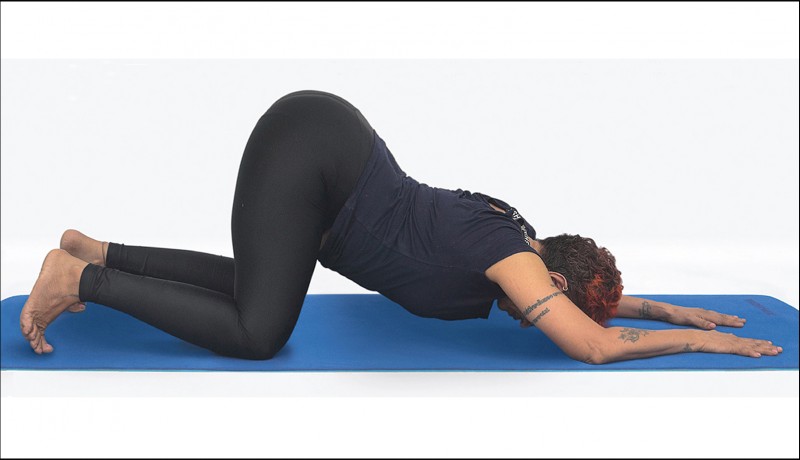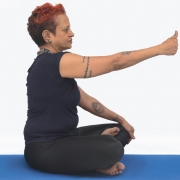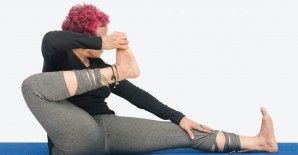
Columns

Shameem Akthar recommends a carefully prepared programme to battle insomnia
Insomnia is a disease for sure, though it may be brushed aside by non-sufferers as a ‘problem to do with the mind’. It has biological triggers: hormonal shifts, lack of key nutrients, other chronic diseases that in turn create insomnia as a symptom as happens with apnoea when disruptive breathing patterns ruin sleep. There are also lifestyle triggers: irregular timings for eating or sleeping; eating a heavy dinner or skipping dinner altogether; the use of smart gadgets whose lights interfere with the pineal gland and its sleep rhythms; reading racy novels or watching disturbing news or films at night; and wrong lighting or furnishing (too much brightness in décor can also interfere with sleep patterns), to name just a few.
You need to first locate your trigger. If it is lifestyle based, you must wean yourself from the habit. If the trigger is biological, consult a sleep expert (who uses sleep monitors to decide your sleep patterns) and coordinate with medical experts to locate the cause and deal with it accordingly. Simultaneously, you need to start on a carefully prepared yoga programme to help you sleep deeply and well.
There are few factors you need to keep in mind while creating your yoga programme: Avoid sun salutes or surya namaskar at nightfall. Avoid stimulating practices that will make you alert such as the skull-cleansing practice (kapalabhati), bellows breathing (bhastrika), or overly dynamic flows (jumps or dynamic versions of asanas). Use a chart of calming and grounding poses that will soothe and prepare your mind. These include most forward bends, gentle inversions (psychic union pose/viparitakarani mudra) and lots of leg raises (which work on the root chakra called mooladhara). Instead of the sun salute, you can try the moon salute (chandra namaskar) and/or earth salute (prithvi namaskar), which are flows with more cooling and calming poses. Always wind down your practice with a five to 10 minute sleep of yoga (yoga nidra) meditation to remove the lactic acid built up in your body (from any physical exertion). To move too soon out of a yoga practice means the blood lactate levels will remain high; this connects directly to your stress gland and keeps you on alert mode!
It is also very important to have a diet specially suited to your dosha/Ayurvedic personality type to help create the missing balance in your mind-body complex. Do not make up your own chart but consult an expert. Using aroma oils that help calm the mind in diffusers or as roll-ons can complement your therapy. Again, only an expert can predict the right oils for you. Though meditation is good for overall calming and control of the mind, it must never be done too close to sleep time because the mind can become alert, if done correctly! It is best practised in the morning. Do include calming breathing practices/pranayamas to further soothe the mind, such as humming bee (bhramari) and victory breath (ujjayi).
YOGIC MOVES
Lizard pose (prishtasana)
Sit on your knees. Inhale; raise your arms up. Exhale; lower them to the ground in front. Inhale deeply; exhaling, begin to walk your palms further ahead as if to try to reach your chest to the ground. Extremely flexible people will be able to do this and may find it is easier to place the chin on the ground. Others may try to lower the forehead to the ground. But the upper back sinks in as shown. These micro adjustments must be done gently and breathing should continue normally throughout the process. Once you have reached the maximum depth in the pose, stay there in a relaxed fashion for as long as is comfortable, slowly increasing the duration over several weeks.
Benefits: This pose removes stress lodged in the shoulders and neck. It sends a gush of blood to the head, calms the brain and removes negative emotions like anger and anxiety. It makes the whole body more flexible, especially the spinal region. It also works on the thyroid and parathyroid powerfully, controlling metabolism and the repairing systems of the body.
KNOW YOUR KRIYA
Trataka (eye-focusing exercises)
There are several trataka practices; you can choose a few that help you. Some, like the one with flickering candlelight, may not be done by those with epilepsy. This one is among the safest. Sit in a meditative manner. (You can use a chair too.) Hold your arm out at eye level in front, thumb extended. Slowly begin to take your thumb towards your nose till it touches it; your eyes should shift with the thumb. Then, reach your thumb back to its original position. Do thrice. Then do with the other hand. For beginners, your arms may ache and eyes may strain. Avoid overdoing it. Calm the eyes by doing palming. This may be done before sleep time to calm the mind, preparing it for deep sleep.
Shameem Akthar is a Mumbai-based yoga acharya. If you have any queries for her, mail us or email at contact.us@harmonyindia.org. (Please consult your physician before following the advice given here)
Photos: Haresh Patel Featured in Harmony — Celebrate Age Magazine April 2018
you may also like to read
-
Mental workout
Mukul Sharma tells you how to keep those grey cells ticking Everyone will ultimately lose his or her brain….
-
Helpline
Dr Harshbir Rana answers your queries on personal and social issues related to ageing, elder care and intergenerational relationships ….
-
Off the cuff
Raju Mukherji pays tribute to his first hero, Tenzing Norgay, an exemplary mountaineer Darjeeling, 1955. Dr ‘Pahari’ Guha Mazumdar….
-
Yoga RX
Shameem Akthar shows ways to control debilitating ankle pain through regular practice Ankle pain is so common and prevalent….








